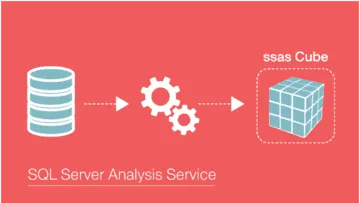
UX Data Analysis 
This course provides learners with the skills and knowledge to analyze data from a UX perspective. It covers a range of topics, from qualitative user research and quantitative user testing data analysis to big data Web analytics. Participants will gain the methods and tools to effectively analyze data in the UX field. ▼
ADVERTISEMENT
Course Feature
![]() Cost:
Cost:
Free
![]() Provider:
Provider:
Edx
![]() Certificate:
Certificate:
Paid Certification
![]() Language:
Language:
English
![]() Start Date:
Start Date:
Self paced
Course Overview
❗The content presented here is sourced directly from Edx platform. For comprehensive course details, including enrollment information, simply click on the 'Go to class' link on our website.
Updated in [March 06th, 2023]
1. You will gain an understanding of the methods and tools used to analyze data in UX, from qualitative user research and quantitative user testing data analysis to big data Web analytics.
2. You will be able to use insights from data to make empirically-based recommendations towards frictionless, optimal user experiences.
3. You will learn from award-winning faculty members, and the course is designed to be accessible to everyone, regardless of previous stats knowledge.
4. You will be able to use MS Excel to do the final exam and complete the certification.
5. You will have the opportunity to join the UX Design and Evaluation MicroMasters, or take the course as an individual.
[Applications]
Upon completion of this course, students will be able to apply the methods and tools learned to analyze data from qualitative user research and quantitative user testing, as well as big data Web analytics. Students will be able to use the insights from this data to make empirically-based recommendations towards frictionless, optimal user experiences. Additionally, students will be able to use MS Excel to complete the final exam and certification.
[Career Paths]
Job Position Paths:
1. UX Data Analyst: UX Data Analysts are responsible for collecting, analyzing, and interpreting data from user research and user testing to inform UX design decisions. They use a variety of tools and techniques to identify trends and insights, and develop strategies to improve user experience.
2. UX Research Scientist: UX Research Scientists are responsible for conducting research to understand user behavior and preferences. They use a variety of methods, such as surveys, interviews, and focus groups, to collect data and analyze it to inform UX design decisions.
3. UX Data Visualization Specialist: UX Data Visualization Specialists are responsible for creating visual representations of data to help UX designers and other stakeholders better understand user behavior and preferences. They use a variety of tools and techniques to create interactive visualizations that can be used to inform UX design decisions.
4. UX Data Strategist: UX Data Strategists are responsible for developing strategies to leverage data to improve user experience. They use a variety of tools and techniques to identify trends and insights, and develop strategies to optimize user experience.
[Education Paths]
1. Bachelor's Degree in UX Design: A Bachelor's Degree in UX Design is a great way to gain the skills and knowledge needed to become a successful UX designer. This degree program typically covers topics such as user experience design, user research, usability testing, and visual design. It also provides students with the opportunity to develop their own portfolio of UX design projects. As the demand for UX designers continues to grow, this degree path is becoming increasingly popular.
2. Master's Degree in Human-Computer Interaction: A Master's Degree in Human-Computer Interaction (HCI) is a great way to gain the skills and knowledge needed to become a successful UX designer. This degree program typically covers topics such as user experience design, user research, usability testing, and visual design. It also provides students with the opportunity to develop their own portfolio of UX design projects. As the demand for UX designers continues to grow, this degree path is becoming increasingly popular.
3. Master's Degree in Data Science: A Master's Degree in Data Science is a great way to gain the skills and knowledge needed to become a successful UX data analyst. This degree program typically covers topics such as data mining, machine learning, data visualization, and predictive analytics. It also provides students with the opportunity to develop their own portfolio of data analysis projects. As the demand for data analysts continues to grow, this degree path is becoming increasingly popular.
4. PhD in Human-Computer Interaction: A PhD in Human-Computer Interaction (HCI) is a great way to gain the skills and knowledge needed to become a successful UX researcher. This degree program typically covers topics such as user experience design, user research, usability testing, and visual design. It also provides students with the opportunity to develop their own portfolio of UX research projects. As the demand for UX researchers continues to grow, this degree path is becoming increasingly popular.
Course Provider

Provider Edx's Stats at AZClass
Discussion and Reviews
0.0 (Based on 0 reviews)
Explore Similar Online Courses

Introduction to SQL Server Analysis Services

Angular 5 tutorial from scratch - Beginners tutorial

Python for Informatics: Exploring Information

Social Network Analysis

Introduction to Systematic Review and Meta-Analysis

The Analytics Edge

DCO042 - Python For Informatics

Causal Diagrams: Draw Your Assumptions Before Your Conclusions

Whole genome sequencing of bacterial genomes - tools and applications

SAPs UX Strategy in a Nutshell by Sam Yen

Creating Business Value with User Experience

Copywriting: Improve User Experience One Word at a Time
 Related Categories
Related Categories
Quiz
 Submitted Sucessfully
Submitted Sucessfully
1. What type of data does this course cover?
2. What type of knowledge is needed to take this course?
3. What type of certification is available after completing this course?
4. What software is needed to complete the final exam and certification?
Correct Answer: MS Excel


Start your review of UX Data Analysis